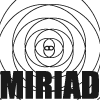Hamid van Koten
University of Dundee
Ethnographic methods in art, craft and design: beneficial appropriation or corporate exploitation?
Recently there has been a move towards incorporating ethnographic practices into the research phase of the design process. Groundbreaking work has been done by design consultancies like IDEO [1], and by trend-predictors such as The Future Laboratory. Large corporations (BMW, Philips and Mark & Spencer) [2] employ ethnographic methods to gather date on the use of their products, their retail outlets, and their customerís relationship with their brand identity. Video diaries, ethnographic fieldwork, and co-design tool kits (Saunders et al. [3]) are rapidly becoming the new means for product and service development
Though there are many advantages to the incorporation of anthropological perspectives and working methods into the design environment, (e.g. providing the design team with a more holistic and more meaningful approach to problem formulation) there is also a need to look critically at this migration of practices.
This paper will seek to investigate the re-contextualisation of these methods and will examine if this is merely a further refinement of strategy, employed by a corporate class, to maintain and stimulate the late-capitalist mode of consumption. These methods may thus be the latest addition to the array of marketing tools, co-existing with the traditional focus group, the market research questionnaire, concept testing, customer satisfaction studies, and so on.
The paper will also seek to compare and contrast this migration into the design profession with the application of anthropological methods as used by artist and craft practitioners. Both of which disciplines, unlike design, are much more aligned with the transparency of cultural production of pre-industrial settings
Ethnographic methods provide powerful means for designers, artists and craft people alike, to interpret and understand specific social networks and symbolic structures, and they are able to translate these into meaningful visual expressions of personal and community identity.
The paper will use a few examples from design, craft and art in order to illustrate the diverse uses of ethnography; including a large community arts project, completed by the author, at Ullapool, a small fishing village on the East coast of Scotland.
[1] Kelly, T., Littman, J. (2001). The art of innovation, Random House, New York.
[2] See e.g.: www.thefuturelaboratory.com/projects-rainbow.html

